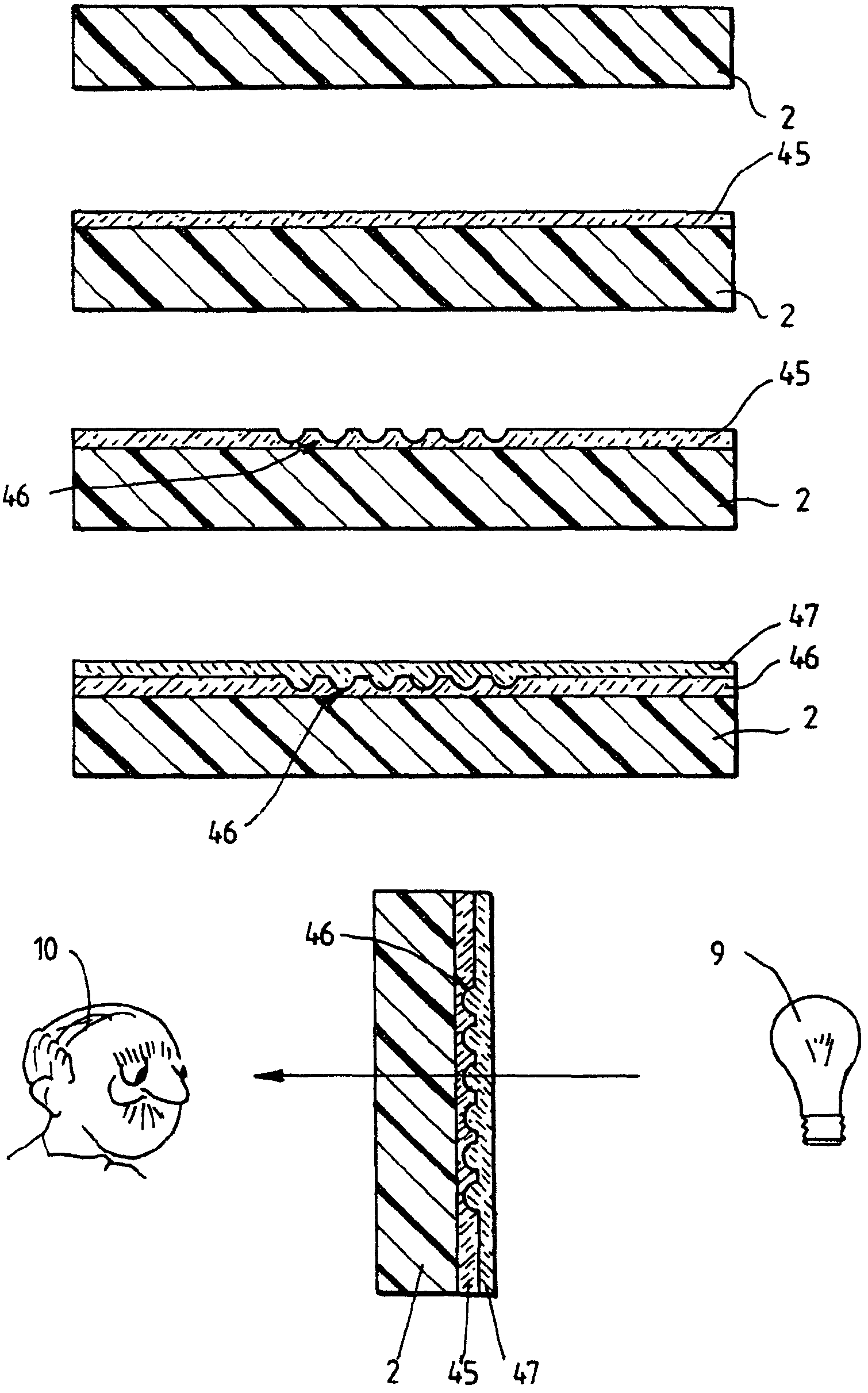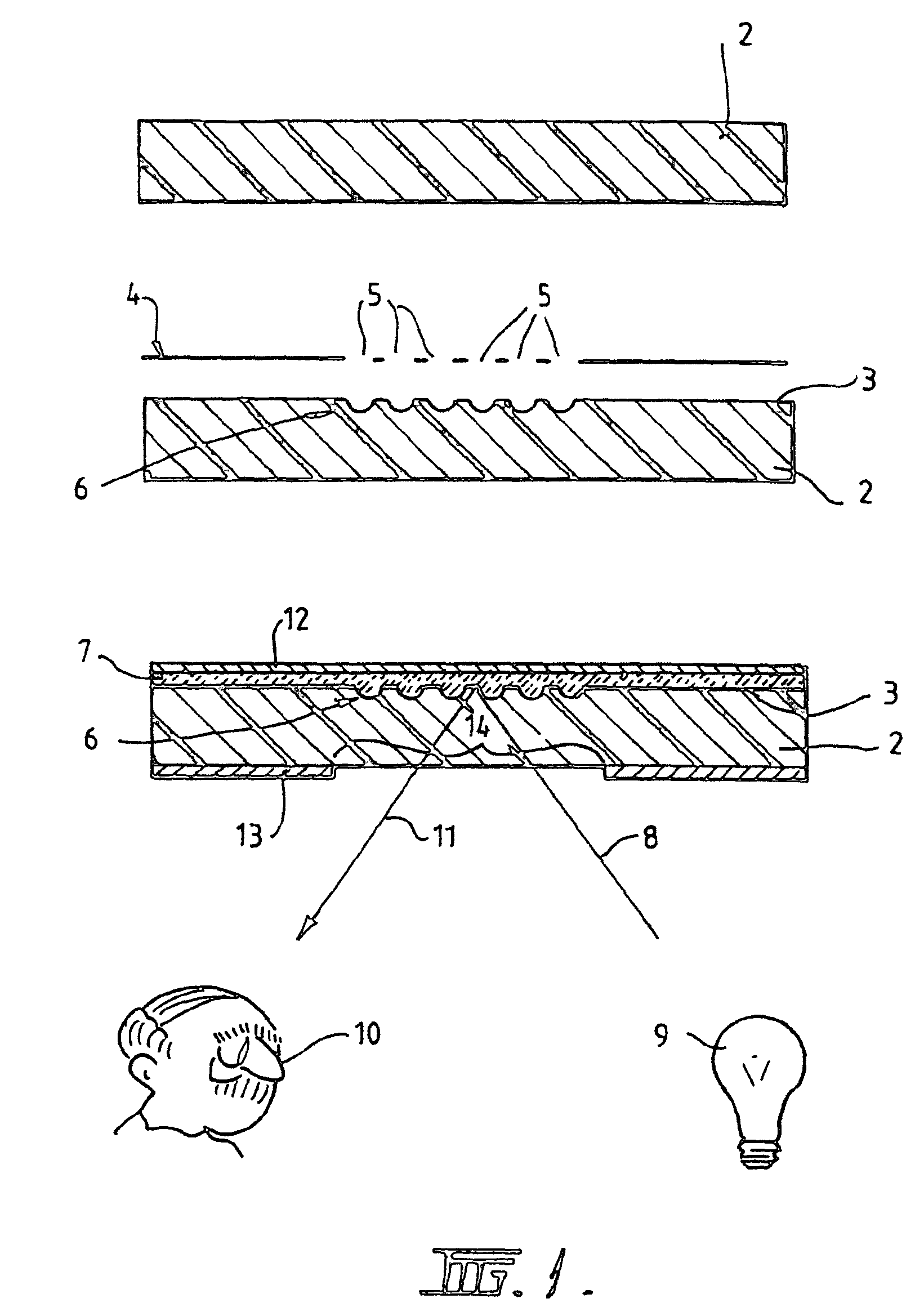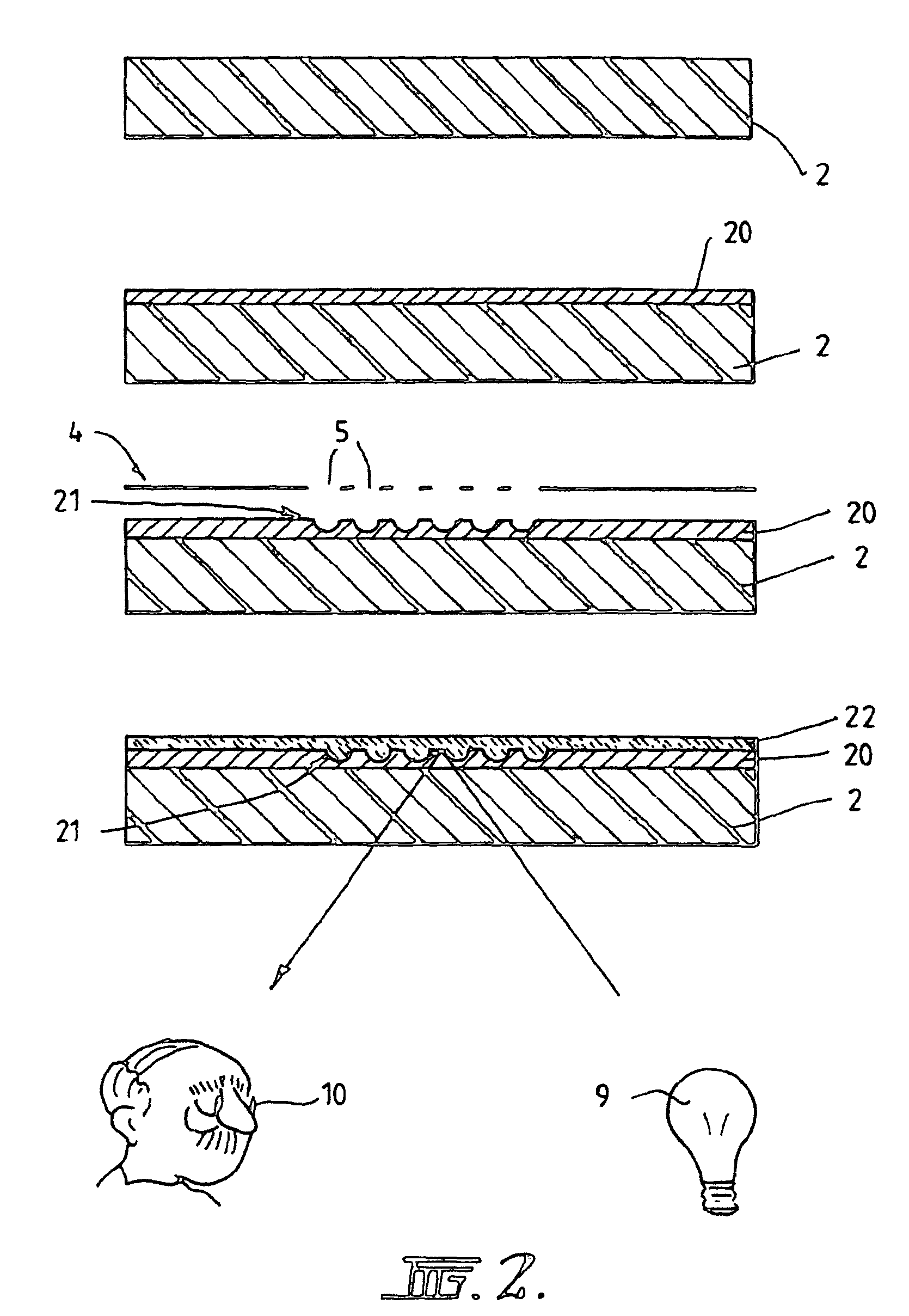Methods of producing diffractive structures in security documents
a technology of diffractive structures and security documents, applied in the direction of printing processes, holographic processes, decorative arts, etc., can solve the problems of high cost, complex and highly specialised process required to produce multi-layer optical diffractive device structures, and may contain at least four and often more layers
- Summary
- Abstract
- Description
- Claims
- Application Information
AI Technical Summary
Benefits of technology
Problems solved by technology
Method used
Image
Examples
Embodiment Construction
[0056]Referring now to FIG. 1, there is shown a transparent plastics film 2 formed from polymeric material, used in the manufacture of polymer banknotes. The substrate 2 may be made from at least one biaxially oriented polymeric film. The substrate may comprise a single layer of film of polymeric material, or, alternative, a laminate of two or more layers of transparent biaxially oriented polymeric film. The substrate 2 is seen in cross section in FIG. 1. Whilst the invention will be described with reference to FIGS. 1 to 6 in relation to the production of polymer banknotes, it is to be appreciated that the invention may also be used in the production of credit cards, cheques and other security documents or devices, and that the function and properties of the substrate in those security documents or devices may vary.
[0057]In this example, a diffraction grating or other optically diffractive device is formed on one surface 3 of the substrate 2 by irradiating an area of that surface w...
PUM
| Property | Measurement | Unit |
|---|---|---|
| Microstructure | aaaaa | aaaaa |
| Area | aaaaa | aaaaa |
| Metallic bond | aaaaa | aaaaa |
Abstract
Description
Claims
Application Information
 Login to View More
Login to View More - R&D
- Intellectual Property
- Life Sciences
- Materials
- Tech Scout
- Unparalleled Data Quality
- Higher Quality Content
- 60% Fewer Hallucinations
Browse by: Latest US Patents, China's latest patents, Technical Efficacy Thesaurus, Application Domain, Technology Topic, Popular Technical Reports.
© 2025 PatSnap. All rights reserved.Legal|Privacy policy|Modern Slavery Act Transparency Statement|Sitemap|About US| Contact US: help@patsnap.com



